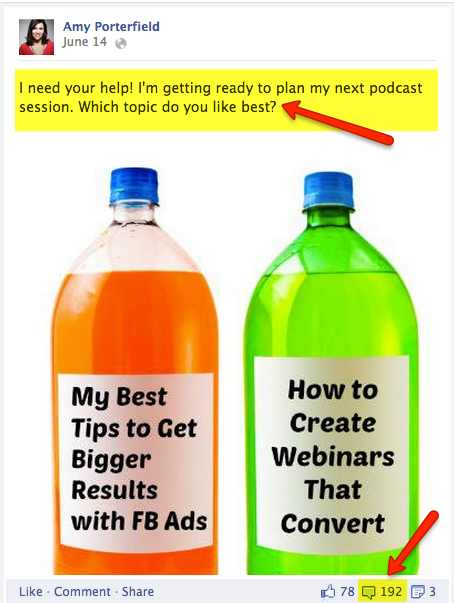Just when you’ve decided to build your social media presence, you face the dilemma “where do I begin”. You have so many platforms, so many users to connect with, a plethora of content you can explore from various angles!
You should know that there is no one-size-fits-all strategy for social media marketing. It all depends on the nature of your business, the products and services you offer, the audience you want to target, your budget and so on. It takes some time to learn what works for you and what doesn’t.
Having said that, let’s begin with the tips that can get you started.
Table of Contents
These are the places which can get you the right audience for your business. So a deeper understanding of these platforms can help you get the edge over your competitors. Start with the Big Four – Facebook, Twitter, LinkedIn, and Google+.
It’s safe to start with one or two of the platforms rather than jumping on all 4 channels at once. Many marketers have tried this and failed miserably.
A simple way to find a suitable platform for your business is to follow the influencers in your niche. Analyze them closely and check their followers on Facebook, Twitter, Google+, Pinterest and so on.
Survey your customers or clients to find out which platform they use and prefer the most.
Another way is to find the leading business in your niche and visit their social media profiles. Let’s say they have 10,000 followers on twitter and 1000 fans on facebook. This is a strong sign that twitter is a better platform for your business. But don’t stop there. Drill down to find their engagement level on these platforms. This will help you determine which one can produce better results.
Optimize your Profiles
Once you decide which platform you want to target, the second step is to optimize your profile. This is going to help you with your SEO and will also increase your followers/fans.
- Update your profile and cover image
Use high-quality images which represent your business and your logo. Social media is all about connecting with people. Your profile picture will create the first impression of your business.
- Keep your description catchy.
Your description should capture your expertise and Unique Selling Proposal. Try to keep it short. When you are writing your Twitter bio besides your main keywords, add relevant hashtags.
- Include a link to your website.
Including a link will help your SEO. You can add it to the “About me” section of Facebook,“Website section” of Twitter and “Contributor section” of Google+.
- Add your physical address and phone number.
Build Your Audience

Once you have set up your profile there are a few basic steps which you can take to build your audience. First, you can invite your friends, clients, partners, and employees to the page.
Make your Social Media Buttons omnipresent. Add social media widgets to your blog or website and social media buttons to your email signature. You should always link your social media accounts on your “About us”, “Contact Us” page, blogs, newsletter etc.
Also, incorporate social media buttons to your website so when you add content to your blog, for example, readers can easily share it. There are various plugins which can help you do that. Always, make these buttons large in size so that they are easily visible and clickable.
Once you have connected with your current contacts try reaching a new audience. Target people with interests in your niche and potentially your product or service. Run social media ads which target the right audience for your business.
Now, let’s have a look at each platform and check some specific strategies:
Facebook:
- Advertise – target under 50,000 people. Retarget your ads for people who have visited your blog/website once. Choose your “type of ad” based on your audience, budget, and product/service.
Twitter:
- Start following relevant accounts – mostly users follow you back when you follow them. So it can make a good strategy for those who are just starting on Twitter. Go through the list of followers of other influencers in your niche. Optimize this list and start following relevant users.
- Use trending and relevant hashtags
- Find interesting twitter chats to join. Contribute to the conversation and interact with other participants. People will follow you when they see your expertise and the interesting insights you have.
Google+:
- Get involved in Google+ circles – find circles which are relevant to your niche, follow them and build a community.
- Join and contribute value to relevant communities.
LinkedIn:
- Ask all your employees to get involved
- Always customize your invitation requests
Don’t rush into building your followers. If you are not already aware, let me tell you that twitter restricts the number of people you can follow per day. Also, on Google+ you can add/delete only a number of people from your circle.
Rome wasn’t built in a day and the same goes for your social presence. You need to have some patience to build thousands of followers. Do not rush into it at the cost of breaking the rules. You might end up getting your account suspended.
I would suggest you build real followers. Then, concentrate on creating amazing content that people would love. This will not only help your SEO efforts but will also help you become an authority in your niche.

Content will remain king forever, and I always say interactive content is the hand of the king. The same goes for social media. When you publish interesting, unique and eye-catching content, people are bound to share it. The more people share it, the more visitors and followers you get.
But what do you post? I have compiled a list of interesting content that you can publish:
- News posts and articles which focus on a controversial topic in your niche.
- Customize quotes to your niche. (I would recommend using Canva for those)
- Posting about any new research or stats in your area (of course by giving proper citations). Alternatively, make your own research and present your findings.
- Create your own infographics – or if you are using someone else’s, make sure you mention them
- Post videos – a “how-to” video tutorial is a good option to start with.
- Use memes, GIFs and other trends. Share a joke once in awhile.
- Include relevant hashtags. They make your content more searchable.
If you are not able to achieve the right amount of engagement in the form of likes, shares or comments, then you need to change your strategy.
One tested way to boost the engagement levels is adding images to your posts. Images catch the attention of your followers easily and help them comprehend the content better. Your message becomes more clear and memorable.
You can look for blank images and customize them (include text in them). For example. you can ask a question and let your followers answer in the comments.

(Source)
Post Consistently but don’t go crazy
Just because you got a million likes on your previous post does not mean that your task is done. You need to post consistently but don’t go overboard with it. Create a schedule and allocate specific time to social media marketing daily.
You can also make use of scheduling apps like Hootsuite and Buffer or use an editorial calendar. This will ensure you are not skipping posts and spending more than the required time.
Now, the question is how much should you post on each social media platform daily?
For Facebook, try once or twice in a day. For twitter, the more you tweet, the more exposure your business gets. For LinkedIn, try once in a day (avoid weekends). For Google+, I would suggest you post twice a day.
Social Media Strategies for Each Platform
Each social media network has a different set of users. Therefore, you need a different strategy for each platform. What works for Twitter might not work for LinkedIn.
For example, Facebook has a more diverse user base. Therefore, it can be used to promote any kind of brand. LinkedIn is a great platform for B2B companies. They can use it to promote business related content to corporate influencers.
Spend some time researching what people are looking for on various social networks. Then, align your strategies with these channels.
Now let’s dig into strategies that you could use for the major players:
Facebook:
- Post Videos. According to TechCrunch, Facebook gets 3 billion views per day.
- Use High-definition images.
- Come up with posts that capture the mood of the season or a holiday
- Change your cover to promote an event
- Keep your post brief and interesting
- Post Questions – it’s one of the best ways to strike a conversation (For example, “Which burger do you like the most? Bomb or Devi’s’?
- Add call-to-actions
Twitter:
- Optimize your bio – include a link to your website, tell people exactly what you do and how you can help them. Be precise.
- Use the advanced search feature to search by keywords and find your ideal potential customers. Go through their profiles and try to learn more about them. Then, customize your content when you are engaging with your target customers.
- Incorporate images in your twitter posts – tweets with images 313% more engagement.
- Engage with your followers on a regular basis – retweet and reply to their tweets.
- Find experts in your niche and interact with them often.
- Tweet regularly.
- Use relevant and trending hashtags
LinkedIn:
- Pick a niche (topic) that connects to your business and keep posting consistent and interesting content.
- Come up with great headlines – this element creates the first impression of your business.
- Use Rich media to effectively convey your expertise to your prospects. (videos, slideshare presentations and other interactive tools).
- Plan your publishing times in a way that gives your posts maximum exposure.
- You can go for a sponsored ad if your budget permits.
Google+:
- Make sure you have claimed authorship with your personal Google+ page.
- Link your website with your Google+ page. Incorporate a Google+ badge on your website, this will enable your users to follow your business on Google+ without having to leave your website.
- Try to use hashtags with every post, this will give you an added exposure. But make sure that the hashtag you are using is in sync with your topic.
- Use clear and illustrative cover photos. You can use this picture to display your new products or advertise any upcoming event.
- If you find webinars expensive, you can host Google+ hangouts. Although it supports only 10 active participants, you can stream it online to unlimited viewers through youtube.
- Join communities in your niche. If you can’t find one, you can create your own using your personal profile page.
Instagram:
- Optimize your profile – include a link, have a consistent name and an eye-catching bio.
- Use a mix of short videos, graphics, images to know what type of content people react to the most
- Comment on other people’s content – use industry-related and brand-related hashtags
- Use fun images from your business – your office or your employees
- Follow your followers and also, reward them sometimes
- Keep a flexible posting schedule – use trending hashtags
- Carefully choose your filters
- Hold photo contests
Pinterest:
- Make a business page (and not a profile). Thus, you can get access to analytics and advertising features which is not possible on a Pinterest profile.
- Take some time out and comment on other pins – relevant pins in your niche where people commenting can be your potential leads.
- Optimize your pins with a high definition images and classy text templates.
- Add videos to your pinboard.
- Organize all your client testimonials on a separate testimonial board.
- Go for Rich pins – it will add extra details to your pins.
Youtube:
- Use your keywords in your channel description and make sure you include a link back to your website.
- Post simple yet unique videos.
- Interact with your fans and subscribers – thank them for their support and always reply to their comments
- Have a call-to-action at the end of every video
- Link to related videos at the end of the video
- Optimize your video description with important keywords and give a brief and precise information about the video content. Also, don’t forget to add a link your website.
Now over to you.
What strategies would you recommend when taking your first steps in social media? I’d love to hear your thoughts.




